Btw, join me, Simon de la Rouviere and Gene Kogan tomorrow, 12th May 2022, 2pm EST at
I've been playing quite a bit with my ceramic heads and their 3d scanned versions. I wrote two articles about the process of these pieces. At some point, I decided it was time to expand this clay made universe. First, I had a request from Gene Kogan, who wanted a temple for Abraham. Not a real big temple, but a metaverse one. So, I proposed a ceramic sculpture that we could 3d scan and build around it, in real life and in the digital world.
I asked myself, what kind of temple should it be? I've always been much more of a painter than a sculptor, it was only in the last 2 years that I started to take sculpting seriously. I'm fascinated with Escher-like, strange looped architecture and I constantly merge world wide temples in my murals. So I googled how to make an ancient looking ceramic temple and found this amazing mesmerizing video by Nata Share.
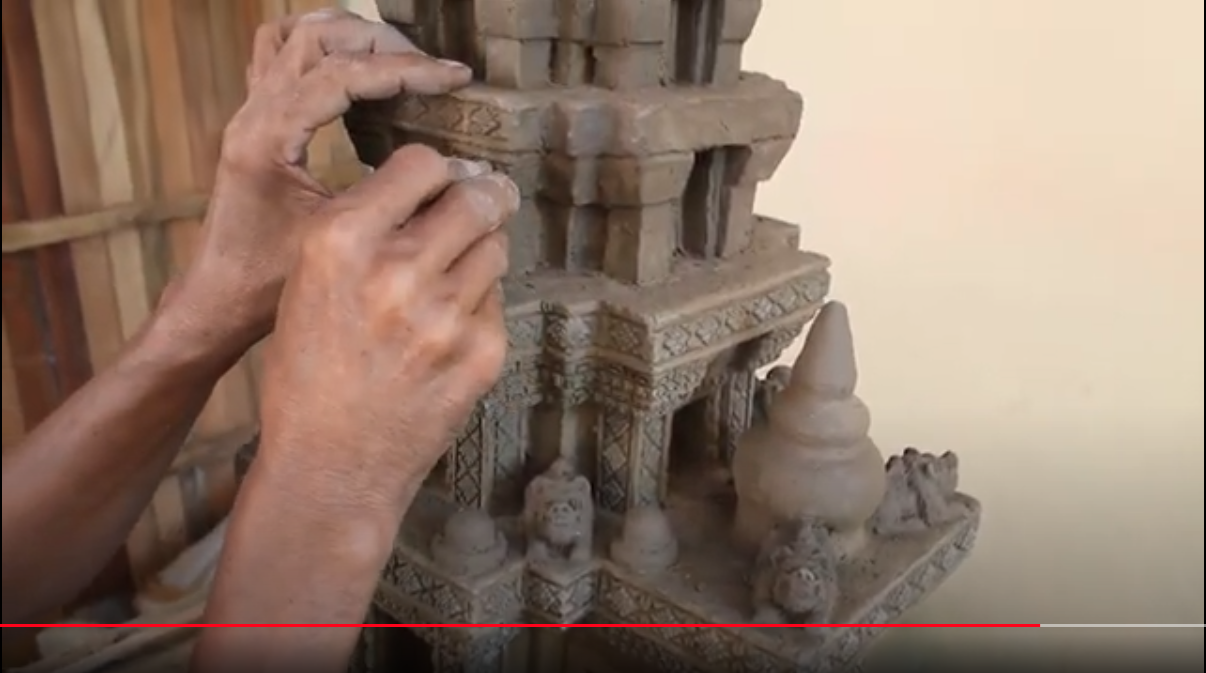
Looking through Twitter I found MadMaraca's work. Her aesthetics fits very well with the kind of painting I've been creating for years. It looks historical and contemporary at the same time. It's extremely detailed, reminds me of a movie set, but it only exists as a 3d render (at least for now). One thing that I particularly enjoyed of her work is how she shares the process, the original sketch made with very basic shapes next to the final piece. So I made clay blocks in similar shapes to one of her sketches.
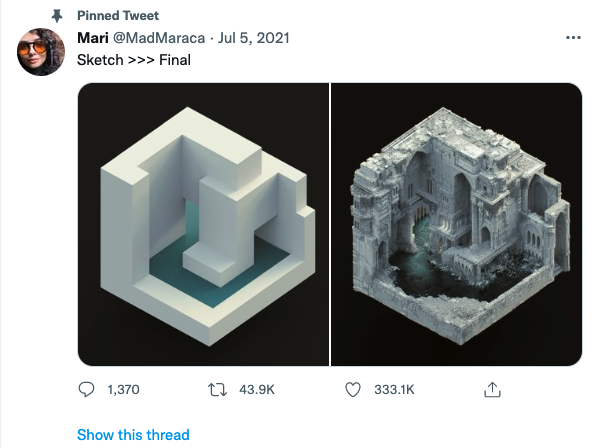
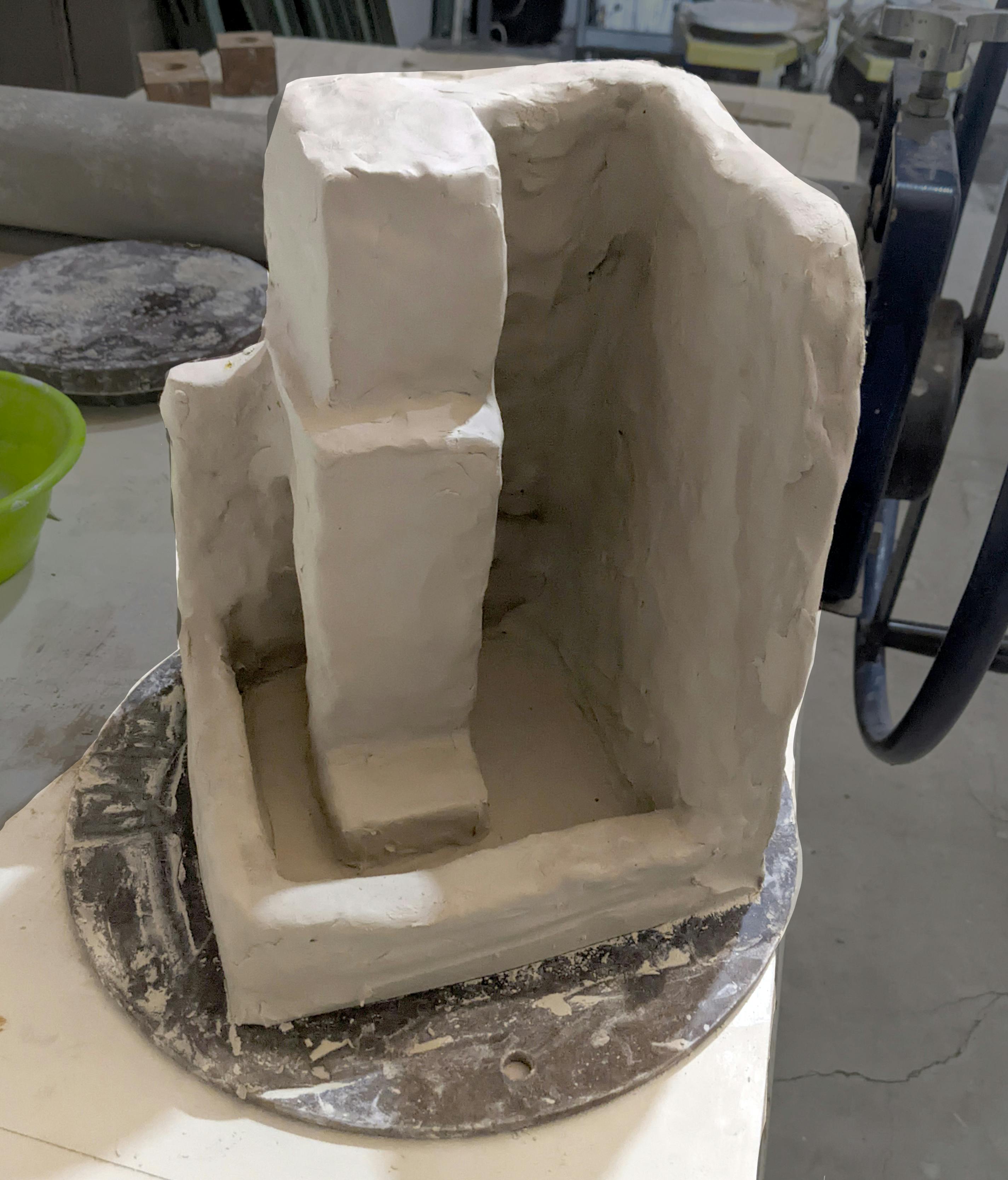
After modeling my piece for a little bit I stoped following any reference. I just kept making more and more floors, archways, connections, high columns. Then I had to wait for it to dry so I could make the angles sharper, I could create interior spaces. It's a continuous play, the state of moist in the clay and what one is allowed to carve without collapsing, cracking, breaking the piece. I did something far less detailed than the Nata Share video or Maraca's work.
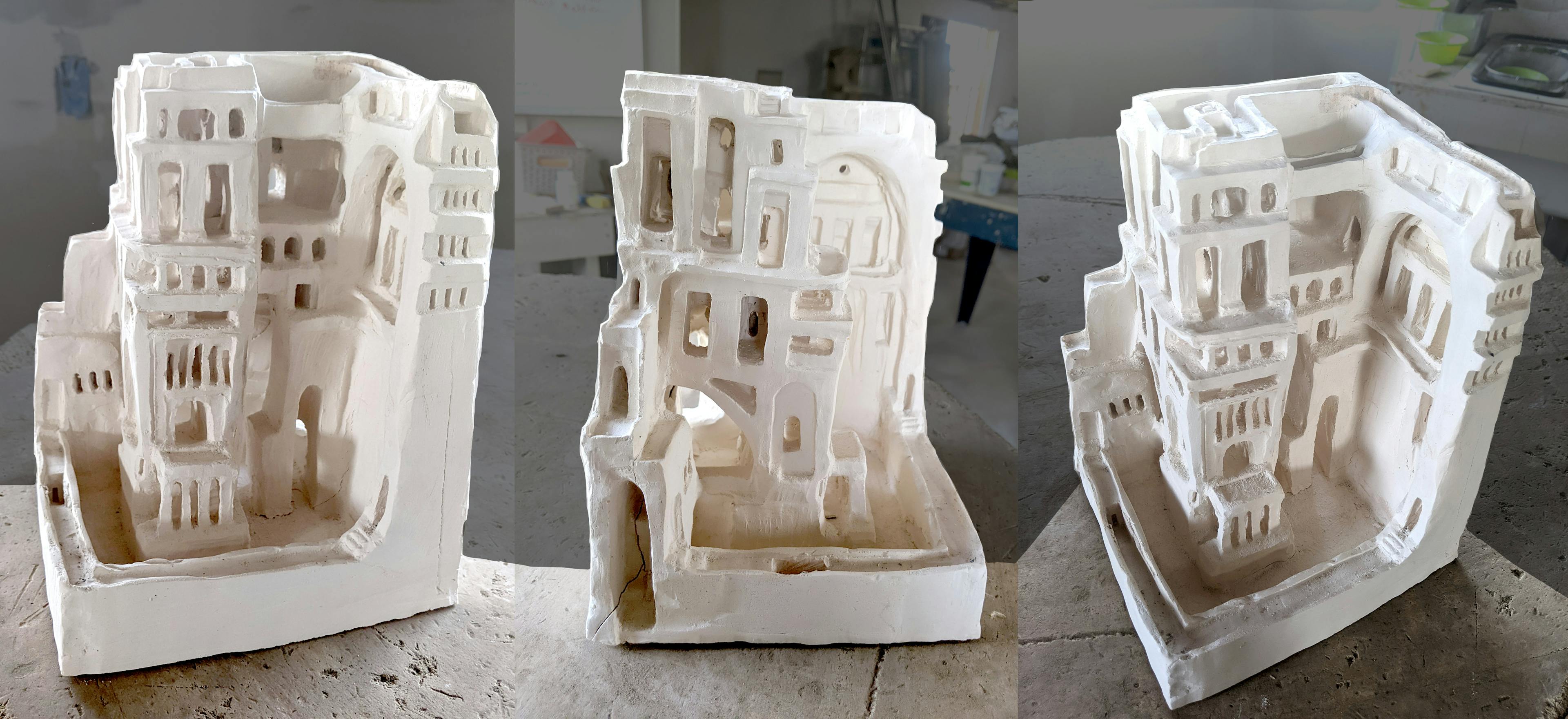

I glazed my temple and added pieces of a green wine bottle to the bottom. The glass melts and becomes this fascinating crystal. The patterns I added with cobalt pigment all melted in the final piece! The colors after glaze fire look nothing like the color of the liquid glazes we apply to the pieces. I really enjoy seeing the glazed temple with different lights around it or even inside it. The surface is very reflective and any LED color will have great effect on it.
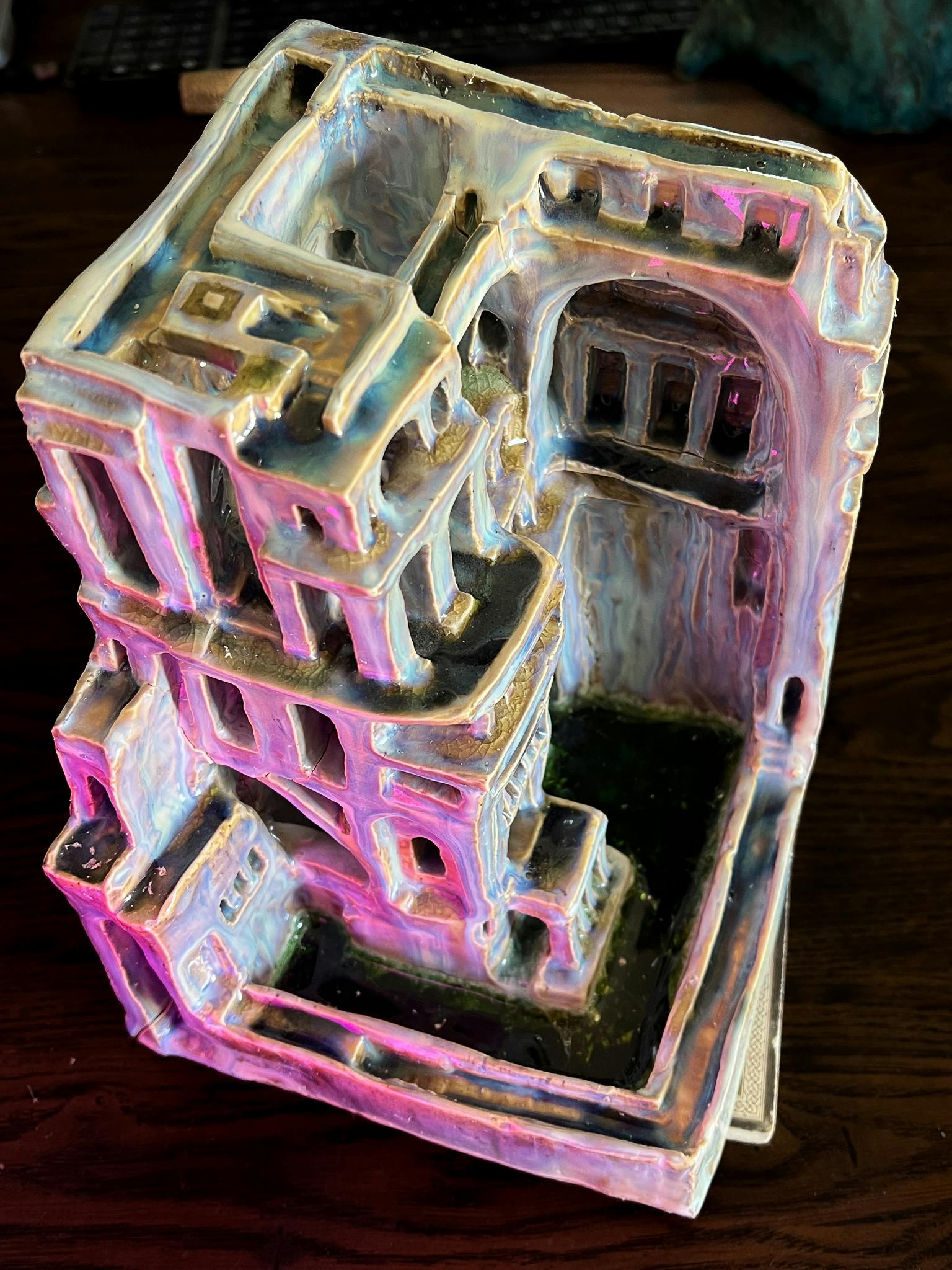
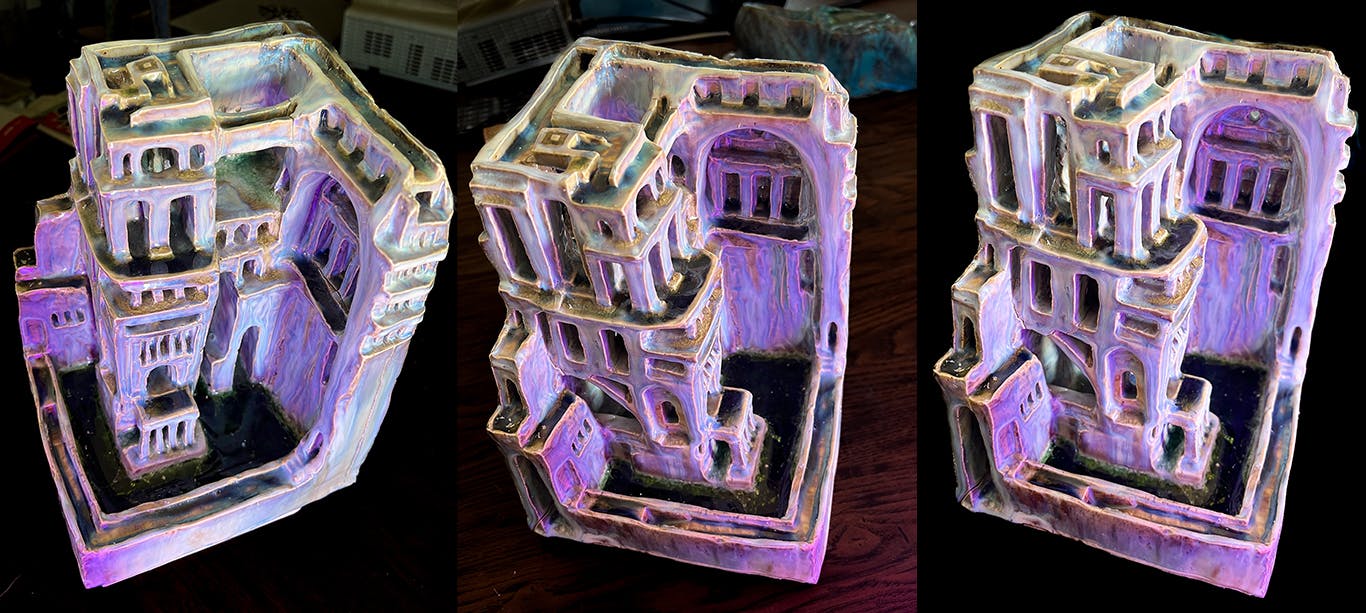
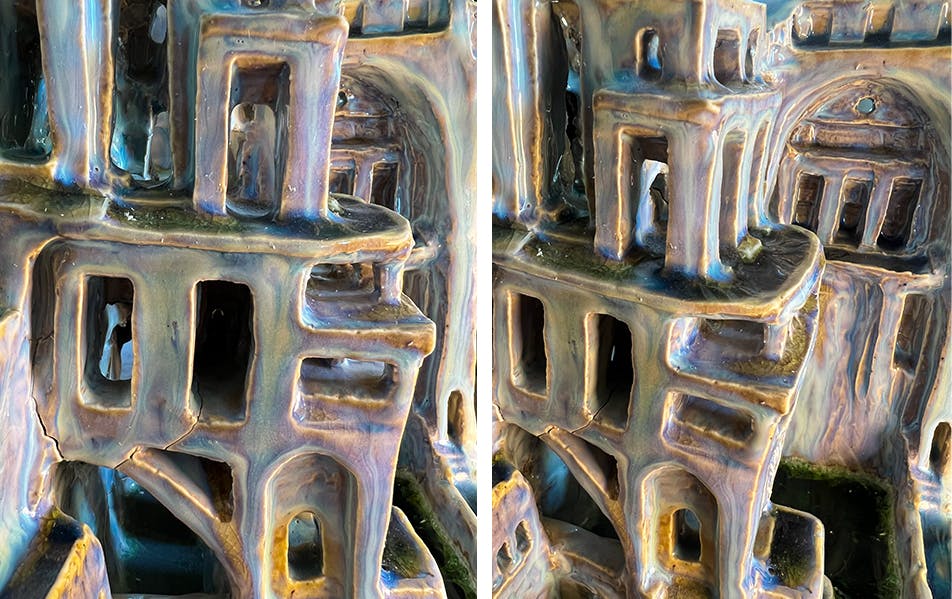
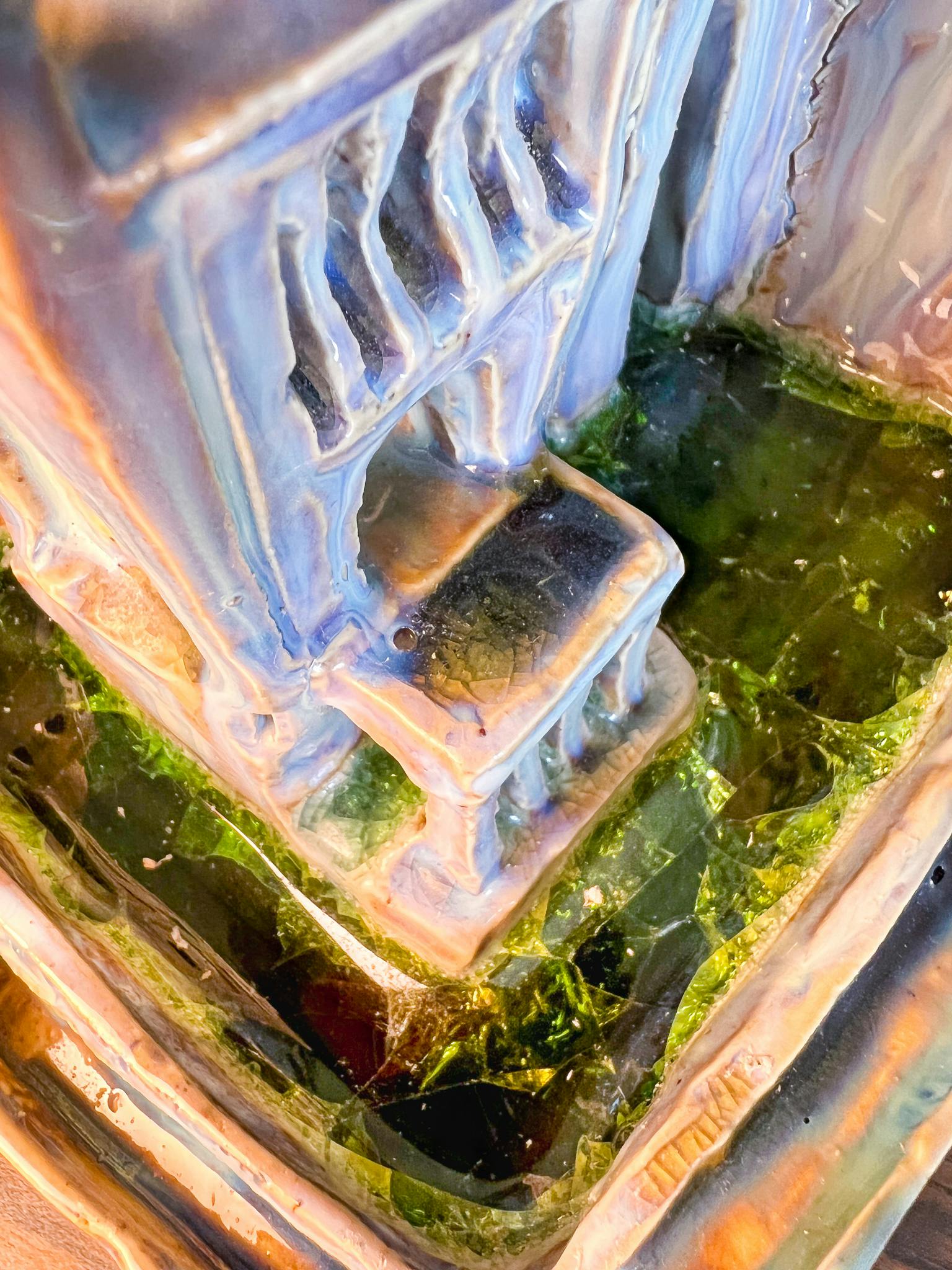
I then had to 3d scan it. The shape is pretty complex and without proper diffuse light I could not make the scans at all. It took me several trials, mostly due to inconsistent lighting. For a moment I thought I'd need a better scanning method that my Iphone13 and the Polycam app. But eventually it did work and the resolution was great. The 3d scan recreates the empty spaces, so I can light the inner rooms and give a new life to the work. It became a scenario for my animations :)
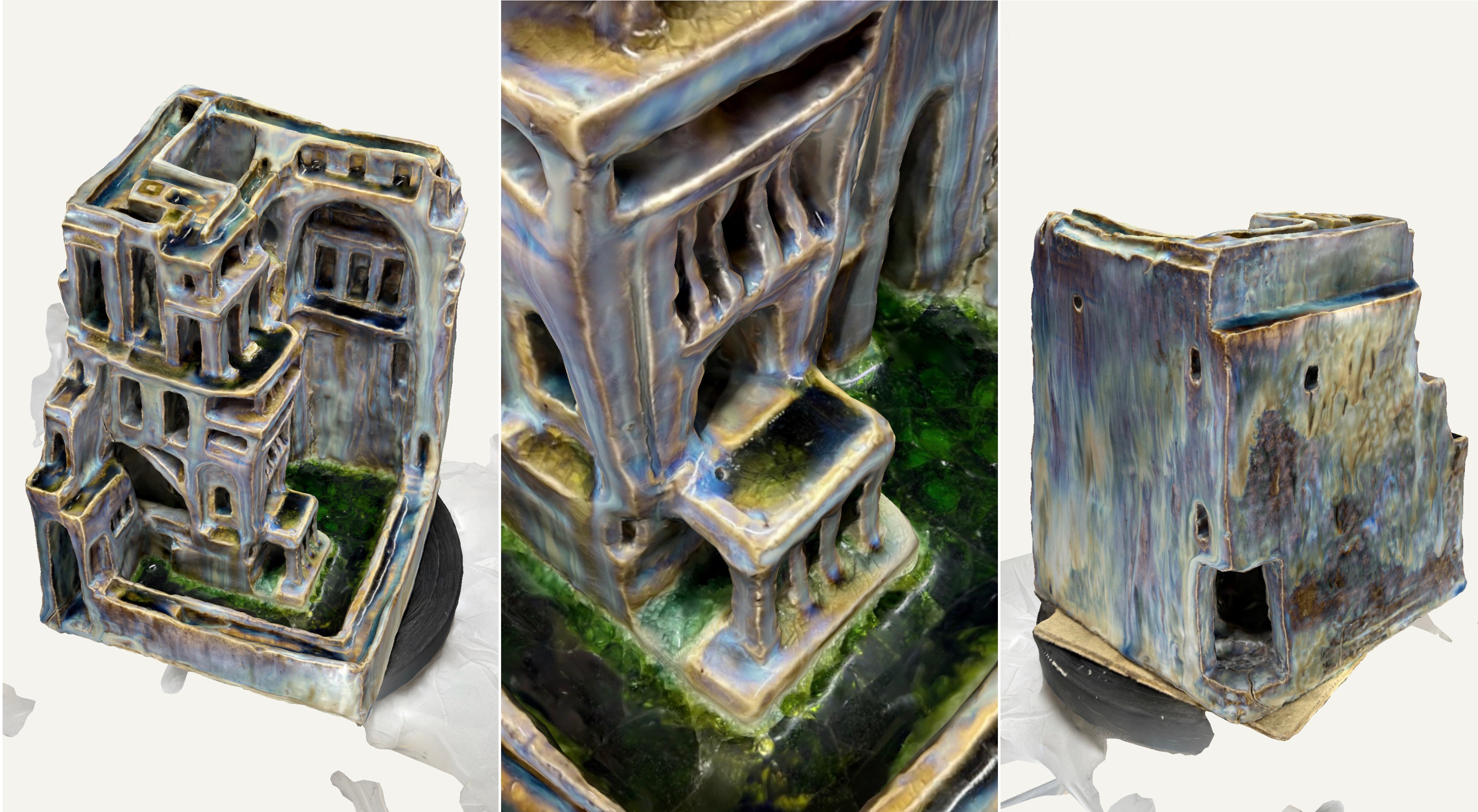
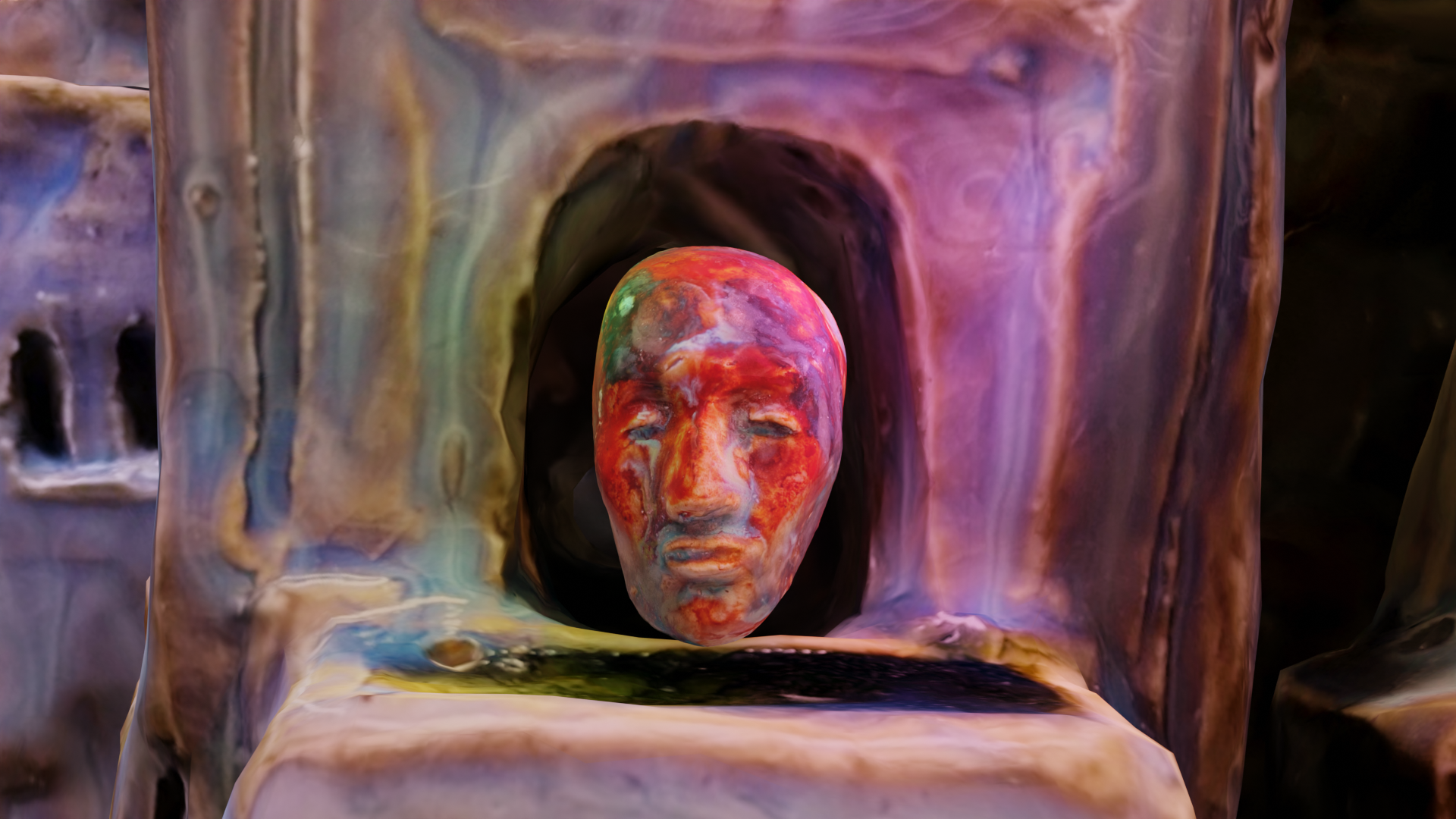
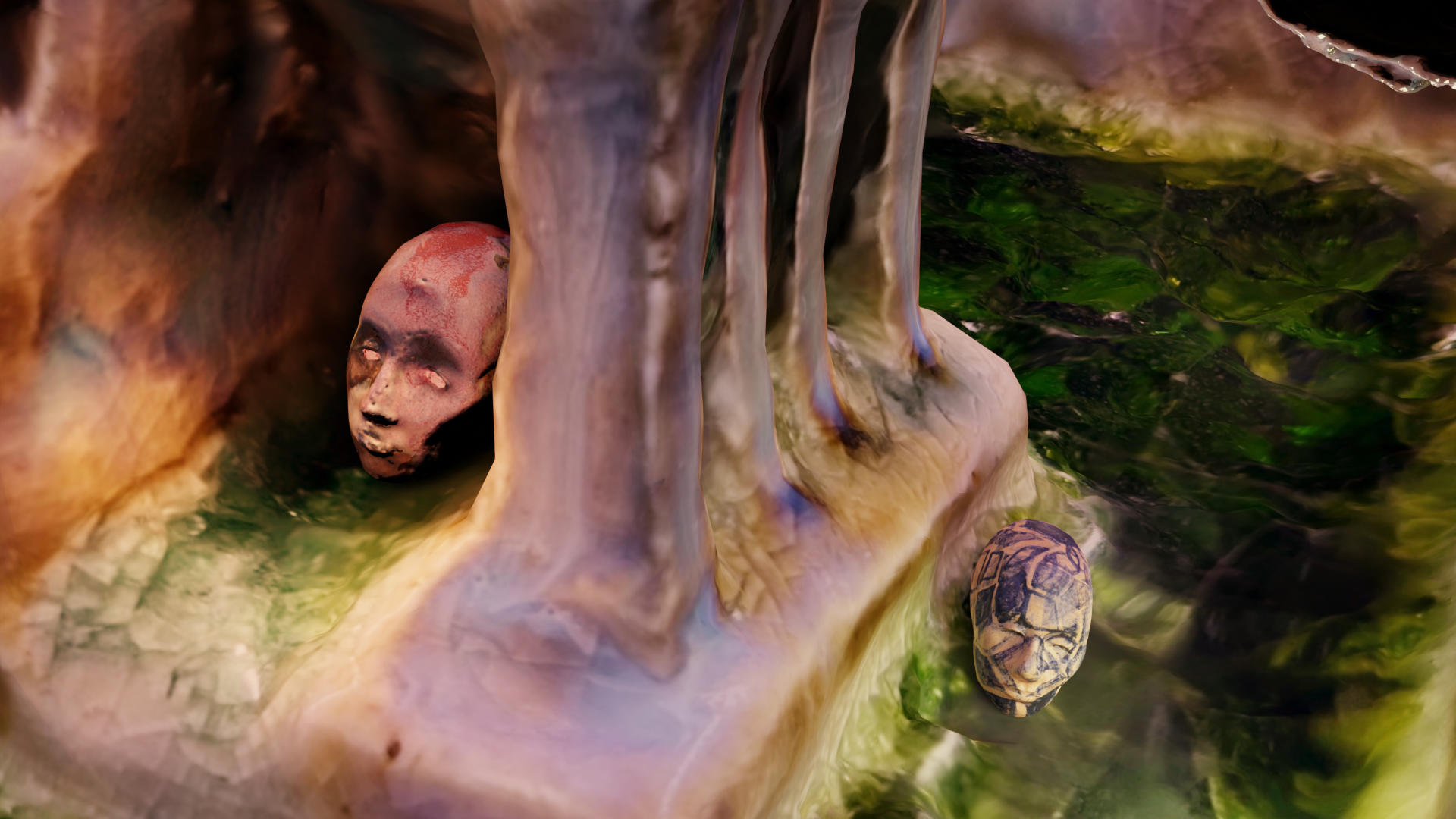
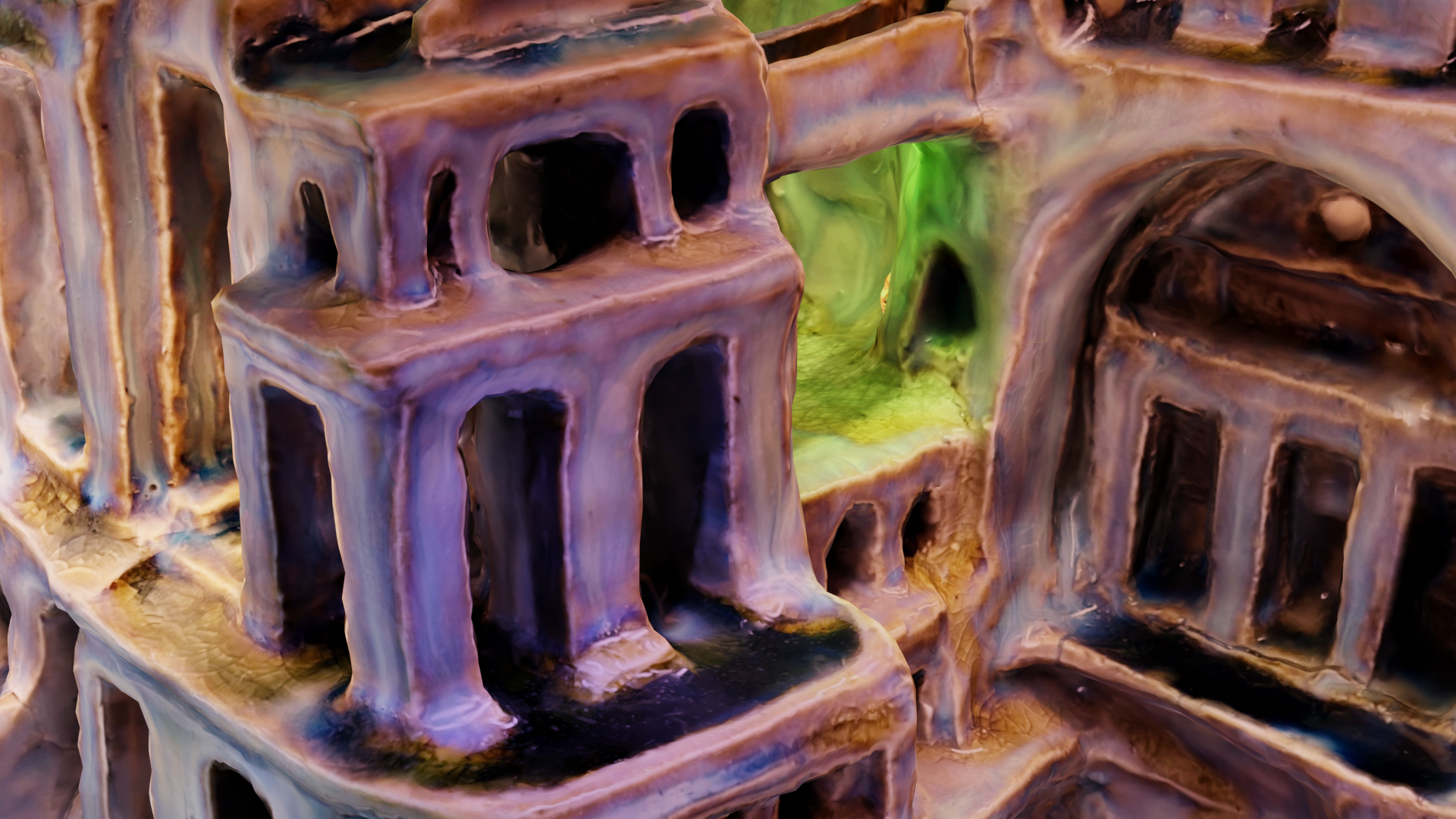
Uploading the model to Arium, a web based custom metaverse, was easier than I expected. I can create my own space, adding several models, lights, animated 3d objects and integrate it with NFTs. Anyone can access the space for free, just keep in mind that it works far better on a computer than a smartphone. One can interact with others in the space, hear the conversations only of those who are physically (in the metaverse) close to you. Soon we will be able to enter the spaces in VR and have custom motion capture based avatars, but for now it feels like a video game. Check the Little Martians metaverse here!
One interesting trick to optimize the platform is to upload high poly models without any physics constrains, meaning one can walk through them. Making objects collidable is computationally intensive, so it's better to do so with low poly models. Thus, one should upload an invisible wall inside a high poly object. This gave me the idea of creating secret spaces, areas that can only be accessed by discovering which parts of the temple did not have collidable walls. Then I can propose a game in which things are hidden in these secret spaces.
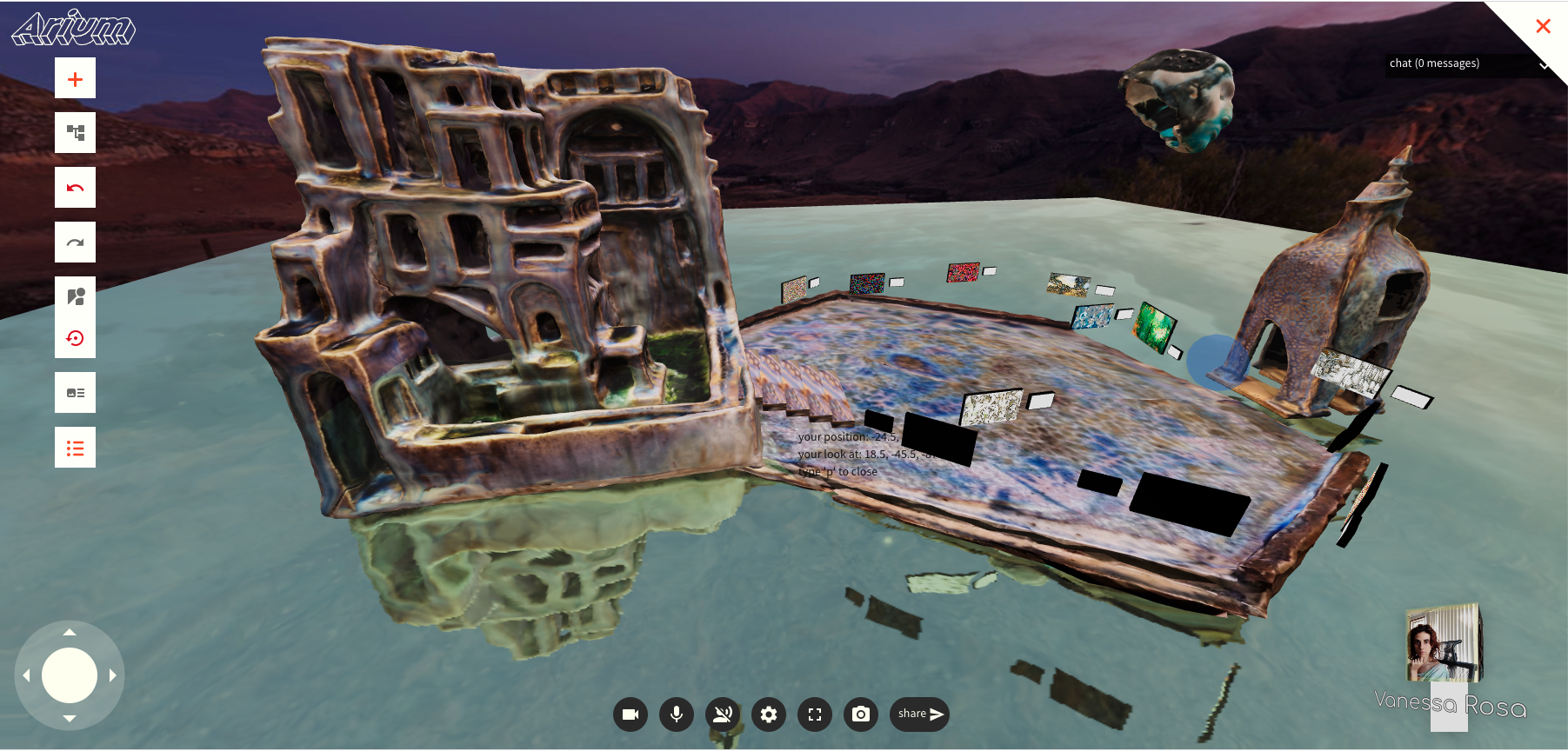
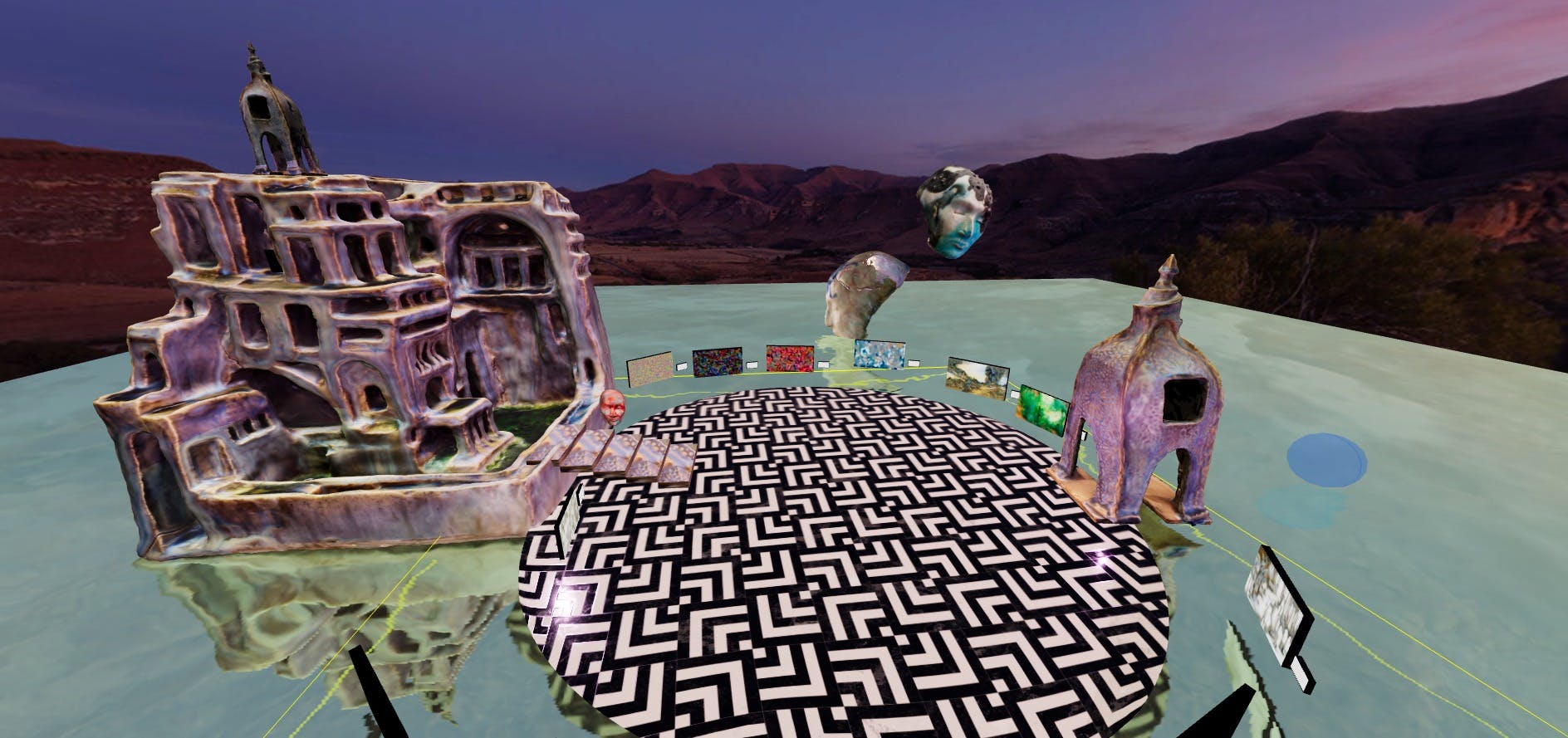
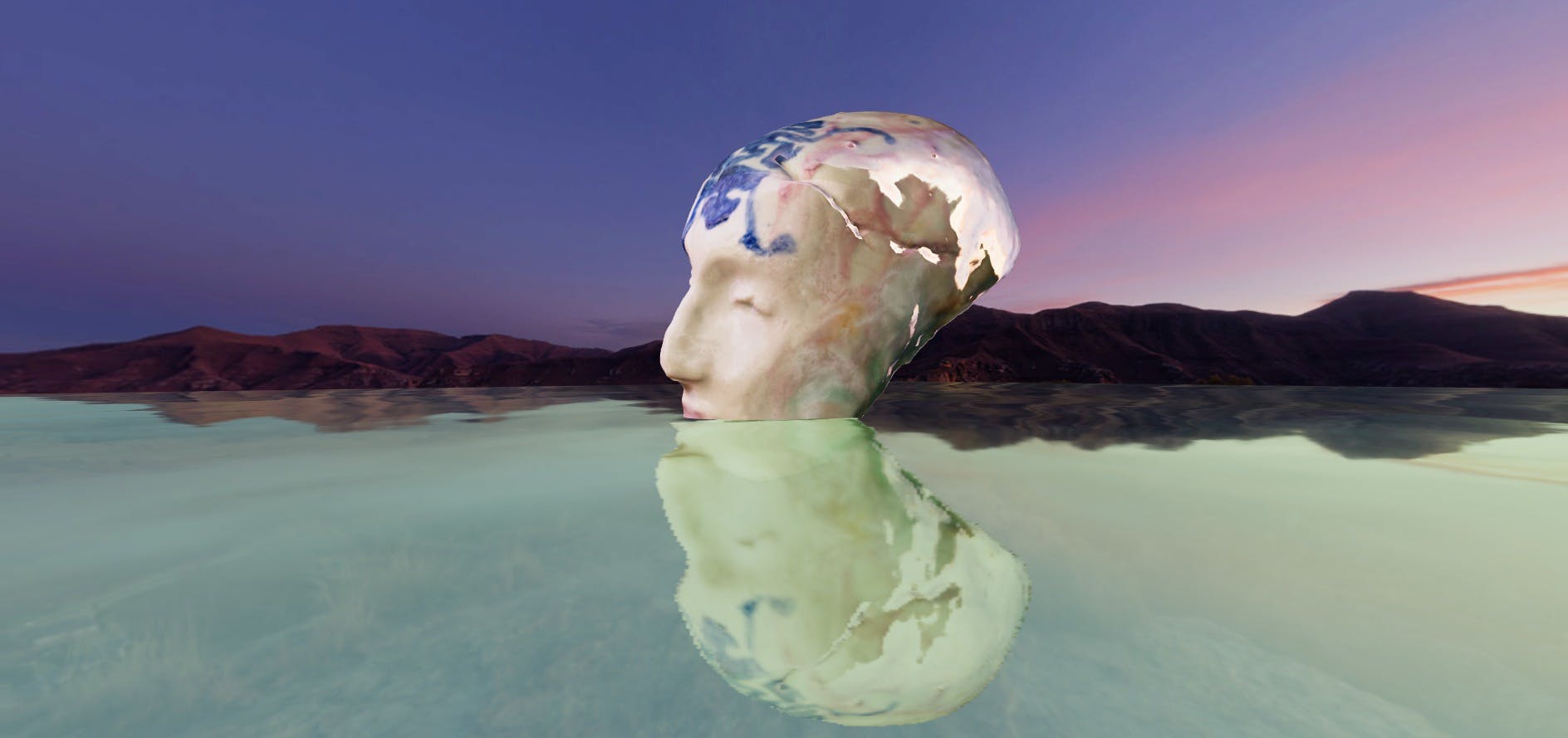
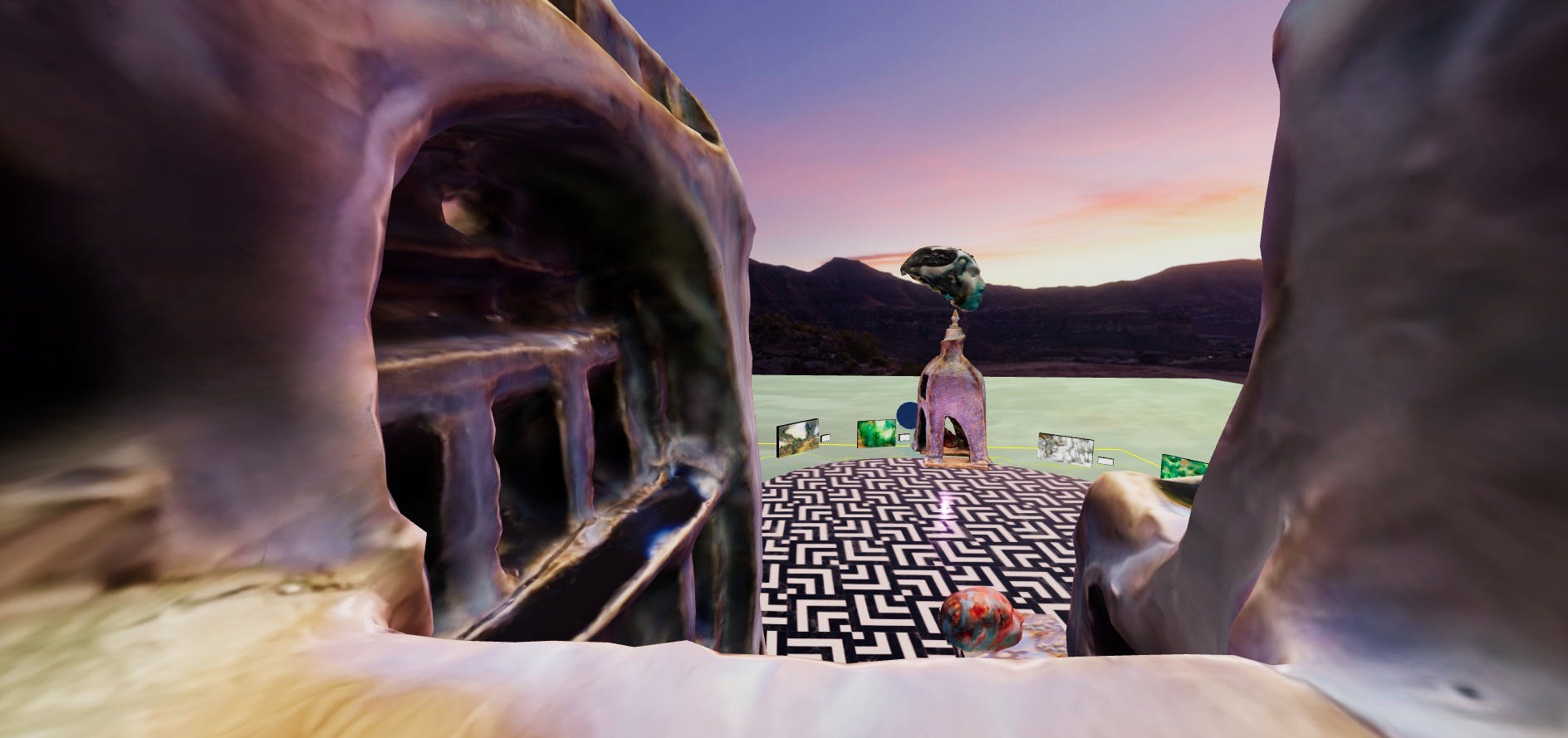
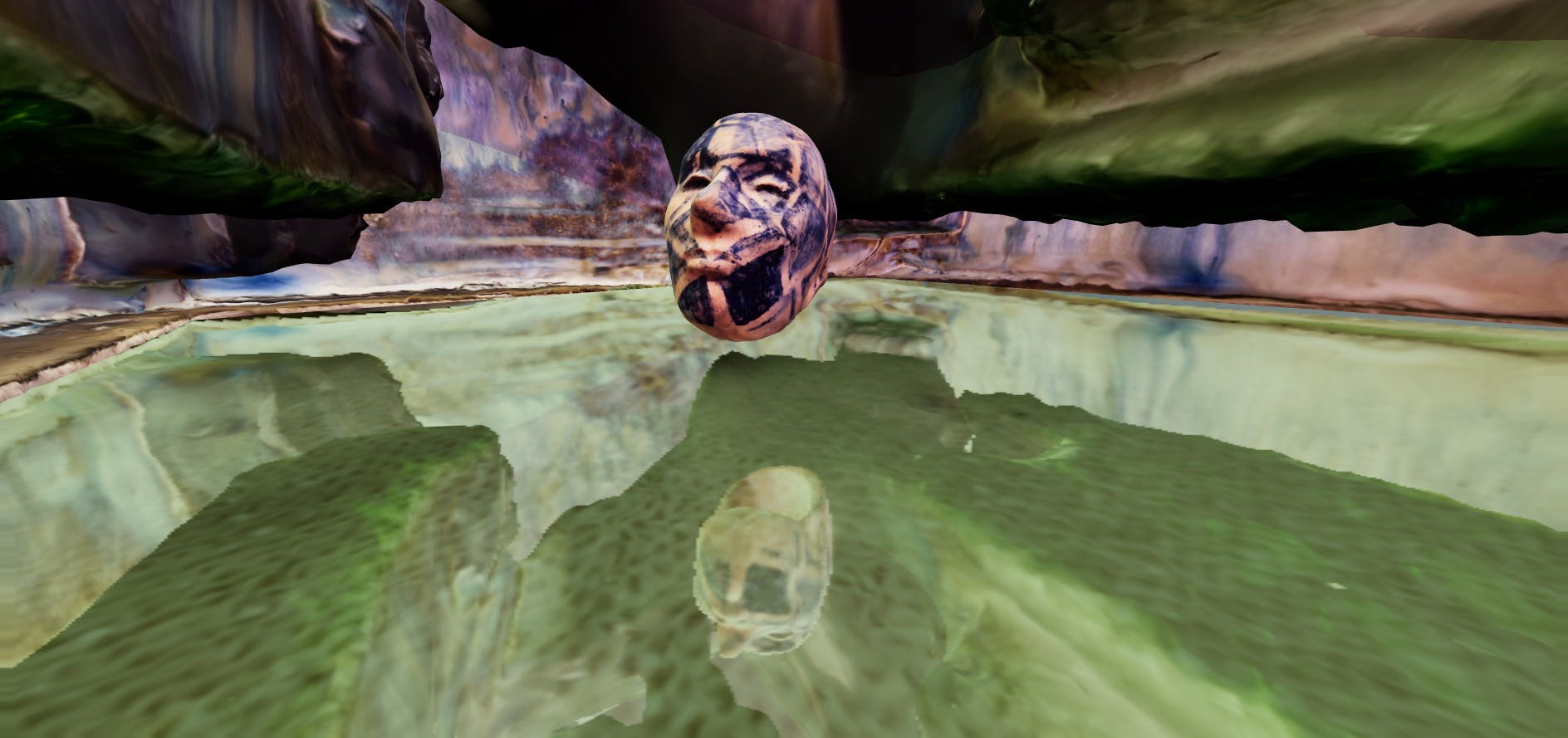
Looking again at Nata's video, it made me think that using 3d printed stamps and pieces would help my process. I can get a much higher level of details with a 3d print, but then I can make a mold of it and use the pieces to decorate a larger sculpture. Or I can make fractal architecture, with 3d printing and mold making of several sizes from the same shape. Clay is such a flexible material, I can combine pieces done with several molds.
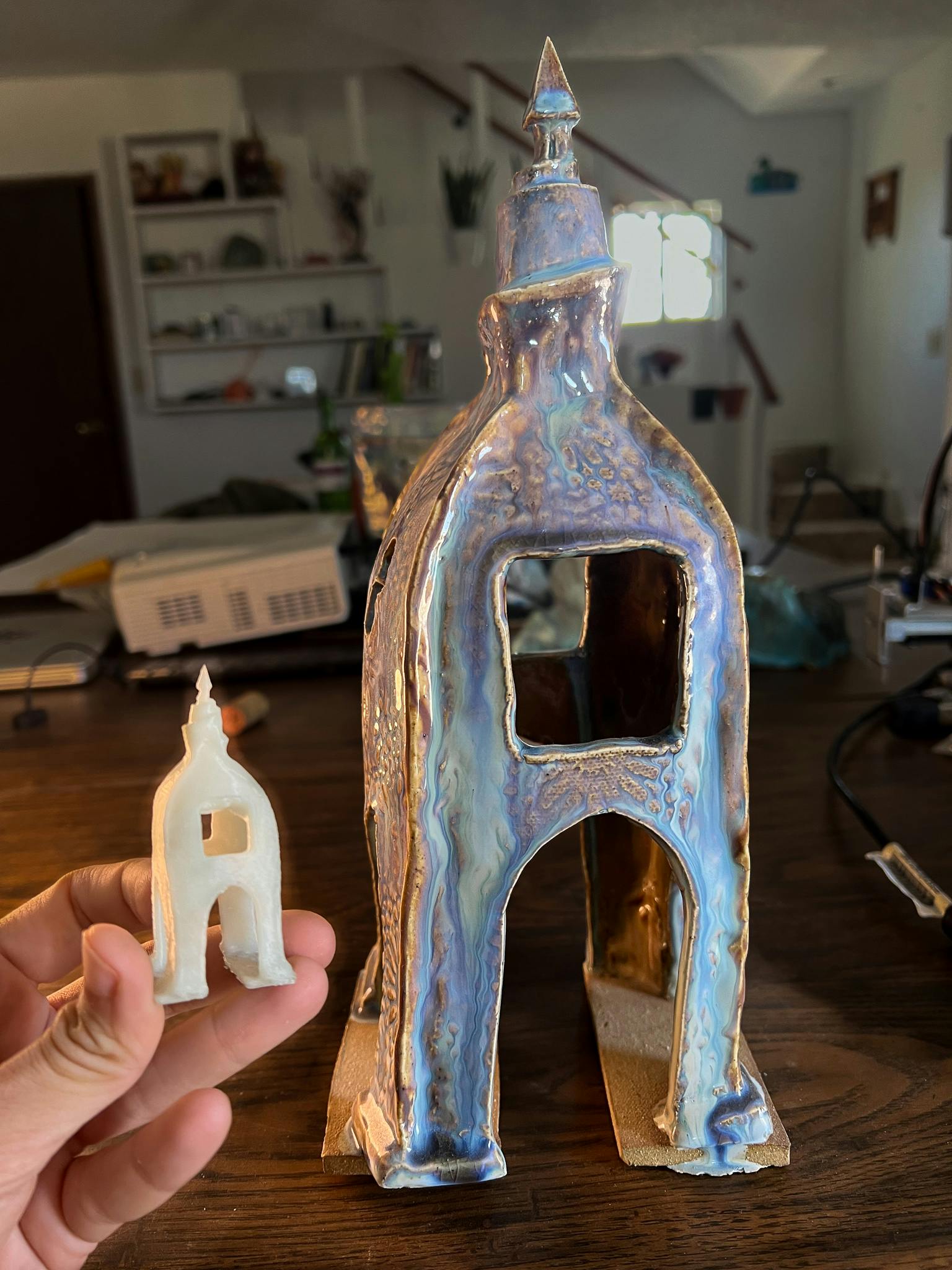
Having a real object that can fit in my luggage but also exists as digital architecture where several people can meet, it's somewhat magical. Permeable walls, secret rooms, at some point being able to fly, to live underwater, we can build the reality as we can imagine it. I was never a big fan of video games, though I was always surrounded by gamers. I thought of myself as a person who worked mostly in analog, in painting&drawing, but now it feels like we don't really have the option of being non digital. Even if we refuse to be online or use a digital camera, we’ll still be affected by all the humans and decisions from the digital world. So, I rather embrace it and think of public spaces, cultural and spiritual experiences within the emerging metaverse. What is public art going to be in the metaverse? What kind of architecture will we live in?
Our future is phygital. :O ;.; \o/ ¡o¡ :P /o\\o//o\